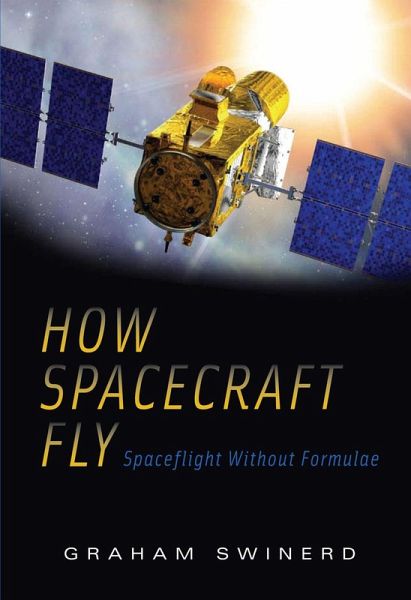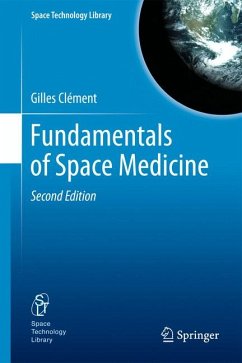
How Spacecraft Fly (eBook, PDF)
Spaceflight Without Formulae
Versandkostenfrei!
Sofort per Download lieferbar
22,95 €
inkl. MwSt.
Weitere Ausgaben:

PAYBACK Punkte
11 °P sammeln!
The aim of this popular science text is to explain aerodynamic and astrodynamic flight without the use of mathematics, in an informal style, for non-technical readers who are interested in spaceflight and spacecraft.The book will open with a concise introductory chapter, chronicling the 'space age' up to the present, and a brief 'forward look' into near-future developments. Chapter 2 provides the historical context upon which the current developments in spaceflight have been built. Orbital motion will be introduced in Chapter 3, and how to get there using launch vehicles is addressed in Chapte...
The aim of this popular science text is to explain aerodynamic and astrodynamic flight without the use of mathematics, in an informal style, for non-technical readers who are interested in spaceflight and spacecraft.
The book will open with a concise introductory chapter, chronicling the 'space age' up to the present, and a brief 'forward look' into near-future developments. Chapter 2 provides the historical context upon which the current developments in spaceflight have been built. Orbital motion will be introduced in Chapter 3, and how to get there using launch vehicles is addressed in Chapter 4. Chapters 5 and 6 look at how spacecraft are designed, and Chapter 7 addresses the additional design constraints imposed if the spacecraft has a human crew on board. Chapter 8 gives examples of current and proposed spacecraft missions, both Earth orbiting and interplanetary. Chapter 9 will look at near future manned flight developments - for example, a mission to Mars and/or space tourism. The book closes with a concluding chapter, which reflects on prospects for the future of robotic and manned space exploration.
The book will open with a concise introductory chapter, chronicling the 'space age' up to the present, and a brief 'forward look' into near-future developments. Chapter 2 provides the historical context upon which the current developments in spaceflight have been built. Orbital motion will be introduced in Chapter 3, and how to get there using launch vehicles is addressed in Chapter 4. Chapters 5 and 6 look at how spacecraft are designed, and Chapter 7 addresses the additional design constraints imposed if the spacecraft has a human crew on board. Chapter 8 gives examples of current and proposed spacecraft missions, both Earth orbiting and interplanetary. Chapter 9 will look at near future manned flight developments - for example, a mission to Mars and/or space tourism. The book closes with a concluding chapter, which reflects on prospects for the future of robotic and manned space exploration.
Dieser Download kann aus rechtlichen Gründen nur mit Rechnungsadresse in A, B, BG, CY, CZ, D, DK, EW, E, FIN, F, GR, HR, H, IRL, I, LT, L, LR, M, NL, PL, P, R, S, SLO, SK ausgeliefert werden.













